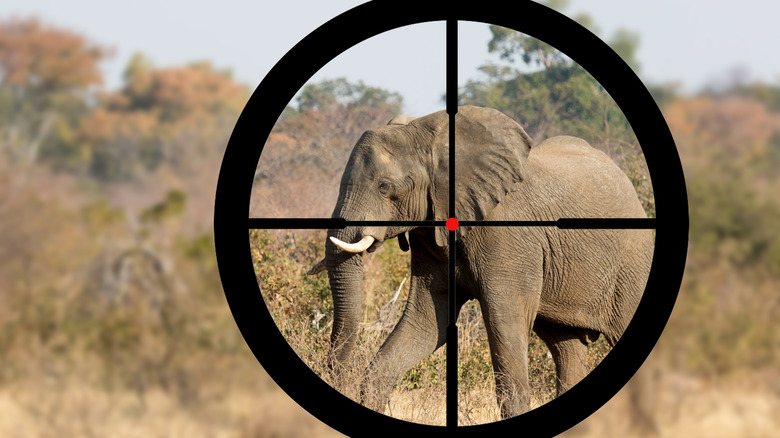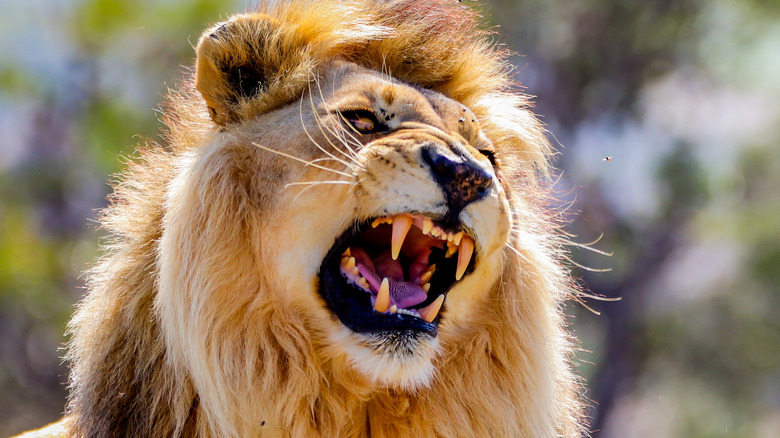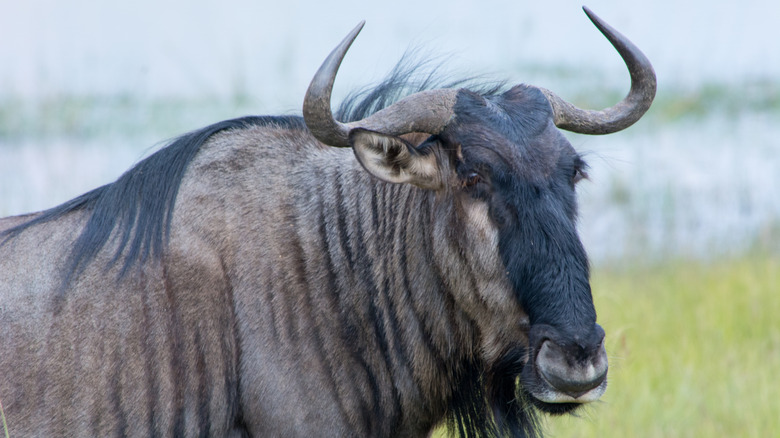How Much Money Does Trophy Hunting Bring In Annually?
In 2013, as ABC News reported at the time, a photo sparked worldwide outrage. Minnesota television personality Melissa Bachman posted a photo of herself on social media, next to the corpse of a lion she had shot and killed. She wrote, "An incredible day hunting in South Africa! Stalked inside 60-yards on this beautiful male lion. What a hunt!" The outrage was swift, including in South Africa, where a local resident started an online petition to ask the South African government to ban her from the country. "She is an absolute contradiction to the culture of conservation, this country prides itself on," Elan Burman noted.
Bachman wasn't the only person to spark outrage by sharing their trophy hunting exploits on social media. Two years later, Walter Palmer, an American dentist from Minnesota, sparked outrage after it was revealed he had spent $55,000 to hunt and kill a lion that had been given the name Cecil, according to Insider.
Trophy hunting — which is to say, hunting solely for the thrill and not for food or for the cause of state-sanctioned wildlife management — may cause moral outrage, but it's also a big business, bringing in millions of dollars per year to impoverished parts of the world, Africa in particular.
Estimates Are All Over The Place
The amount of money brought into South Africa specifically, and Africa broadly, via trophy hunting is in dispute — and note here that we're limiting the discussion solely to Africa. According to a 2018 report by Global Ecology and Conservation, via ScienceDirect, trophy hunters spend $250 million annually in South Africa alone. Similarly, Catherine E. Semcer, a research fellow at Property and Environment Research Center – which is a "conservation and research institute dedicated to free market environmentalism," as noted on their website – testified before Congress in 2019 saying that the cash benefit to Africa generally is in the neighborhood of $190 million to $326.5 million. Semcer also claimed that trophy hunting supported 53,400 jobs on the continent.
A 2021 National Geographic report provides an example of how the trophy-hunting industry works, at least as it relates to hunting elephants in Namibia. The tourist pays a fee of about $80,000 for a 14-day hunt. The hunter is allowed to take his trophies — the elephant's tusks — home, while the meat is given to the local tribespeople, the San. Further, some portions of the money go to the tribe, some of it for conservation efforts. "I feel quite sh*itty when an elephant dies, but those elephants pay for the conservation of the other 2,500 that move through here. Trophy hunting is the best economic model we have in Africa right now," said Felix Marnewecke, a professional hunter and guide.
The Financial Benefit Is In Dispute
In 2016, the Democratic staff of the House Committee on Natural Resources published a report that claims, among other things, that trophy hunting is "managed well" — and here "managed well" means that it's done so in a way that focuses on conservation and conscientious use of the monies generated — in some places, and managed not as well in others. For example, the report claims that in Tanzania, there's "little evidence" that monies generated from trophy hunting have been used to further wildlife conservation efforts. Further still, the same report noted that Zimbabwe has also had "limited success" in converting trophy hunting into meaningful conservation efforts.
Similarly, National Geographic notes that trophy hunting is, in some cases, managed by corrupt governments. And indeed, other governments on the continent have decided that trophy hunting is not the way for them to raise revenue. For example, Kenya has banned the practice outright for decades, while Botswana has forbidden trophy hunting on government-owned lands in that country since 2014.


